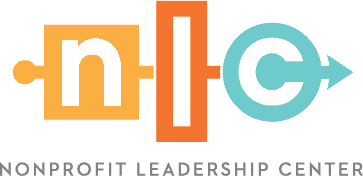With so much media content in the world, have you ever wondered how your organization can cut through the clutter and resonate with your audience? Soul Media CEO and Nonprofit Leadership Center trainer Emily Ghosh Harris says the key to building a brand that leaves a lasting impact is to look at the big picture and align your personal and organizational brand.

Iconic brands are intentional. They create legacy and trust by operating at a high level elevated from other brands.
Use Emily’s five strategies to create an iconic brand that leaves a lasting impact and changes the world.
Five Strategies to Create an Iconic Brand
1. Commit to your purpose.
Did you know that 74% of Americans are more likely to trust someone who has an established brand? (Source: Brand Builders Group)
Establish trust and credibility by showing up consistently while also authentically sharing your personal “why.” Let your why be so strong that it compels you through the things that are uncomfortable. Write down your why and revisit it often. As a nonprofit professional, live and breathe your passion and purpose at networking events, community meetings and yes, even family reunions!
This will allow you to be congruent in your messaging as a personal and organizational brand.
2. Recognize your audience and address their concerns.
Strong brands work to ensure their audience understands what they do as an organization and that they are good stewards of their resources. Make your audience feel as though they are part of your organization — a true partner — where their voice is heard and honored.
Have a process for asking for reviews and testimonials from your constituents and donors and continually showcase their voice. This drives the firsthand point of impact from your organization to your audience and community at-large.
3. Know your destination and measure success.
Great brands aren’t built overnight. They understand the power of the long game and pursue their true purpose with confidence.
- Play the long game. Let go of perfectionism and focus on becoming a person of excellence. Ask yourself how you want to feel and seek clarity, so you can organize daily, weekly and monthly actions in alignment with your and your organization’s highest vision.
- Gain confidence and magnetism. Ask yourself: What has gotten in my and my organization’s way of creating a large and lasting impact thus far? Be honest! Recognize that not everyone who is successful is innately confident. Confidence is a skill and equivalent to a willingness to try. This skill should be reviewed each week to grow over time.
4. Embrace the best social channels and marketing practices for your organization.
The rise of social media platforms has given birth to a digital influencer economy with content creators at the heart of this explosion. Embrace social channels and the best marketing practices for your brand in four key ways:
- Recognize that your content is a service. Pick one day a week to devote to content creation and publish at least one significant piece of content each week. It becomes easier to create when you have several core content pillars in mind when sharing information as the voice of your organization.
Ideas are endless! Keep a running list of yours. Creatively combine them with your organization’s core content pillars to produce content that resonates with your audience.
- Identify the best social media tools for your brand. Content and education are non-negotiables from a marketing standpoint for your organization. Know which social channels have the opportunity to propel you forward and focus on a content strategy for each.
- Integrate compelling videos and visuals. The goal is to evoke emotion and make your audience automatically feel something. Raise the standard of your content and don’t rush to get things out.
Having a library of content gives you more items to work with. Get used to shooting b-roll consistently, using hooks for introductions, and showing faces (yours and others) in the content you create.
- Use email marketing. Email is an opportunity to extend your mission, heart and purpose. (It also contributes significantly to online revenue for most companies and nonprofits.)
Utilize strategies to grow your email list by integrating practices that engage and provide value to your community. Emails should educate, inspire and provide some level of hope for a brighter future made possible by your organization.
5. Maximize storytelling.
Storytelling helps with visibility and creates a level of thought leadership that inspires and engages communities through your brand. An organization should always adopt the mindset of beginner when sharing.
Knowing when and how to incorporate stories and getting comfortable sharing vulnerable moments humanizes your brand and enhances audience engagement and memorability. Maximize your storytelling by:
- Know the components of a good story. Elements of an impactful story include an arc of transformation, introduction, rising action, a climax, and a resolution.
- Be a heart leader. Teach people how you think about a topic. Make a list of all the key defining moments in your life and how they relate to your organization’s mission.
- Take advantage of apps and resources. Our brains remember stories better than data points or basic information. Regularly provide opportunities for people to share and cultivate brand ambassadors (raving fans of your organization) by creating content that makes others want to champion your cause. The more brand ambassadors your organization has, the more likely your sphere of influence as an organization extends further out into the community.
- Practice your elevator pitch frequently. We all resonate with the highs and lows of the human experience. Capture this idea and share it by constantly revisiting your why. This consistency will help create a bond between you, your organization and your audience over time.
Strengthen Your Nonprofit Brand at an Upcoming Event
The Nonprofit Leadership Center offers nearly 100 nonprofit training events and certificate programs each year to help nonprofit professionals strengthen their skills, organizations and our communities. From marketing and communications to leadership, management and fundraising, our world-class trainers and learning experiences will help your nonprofit achieve iconic brand status.

